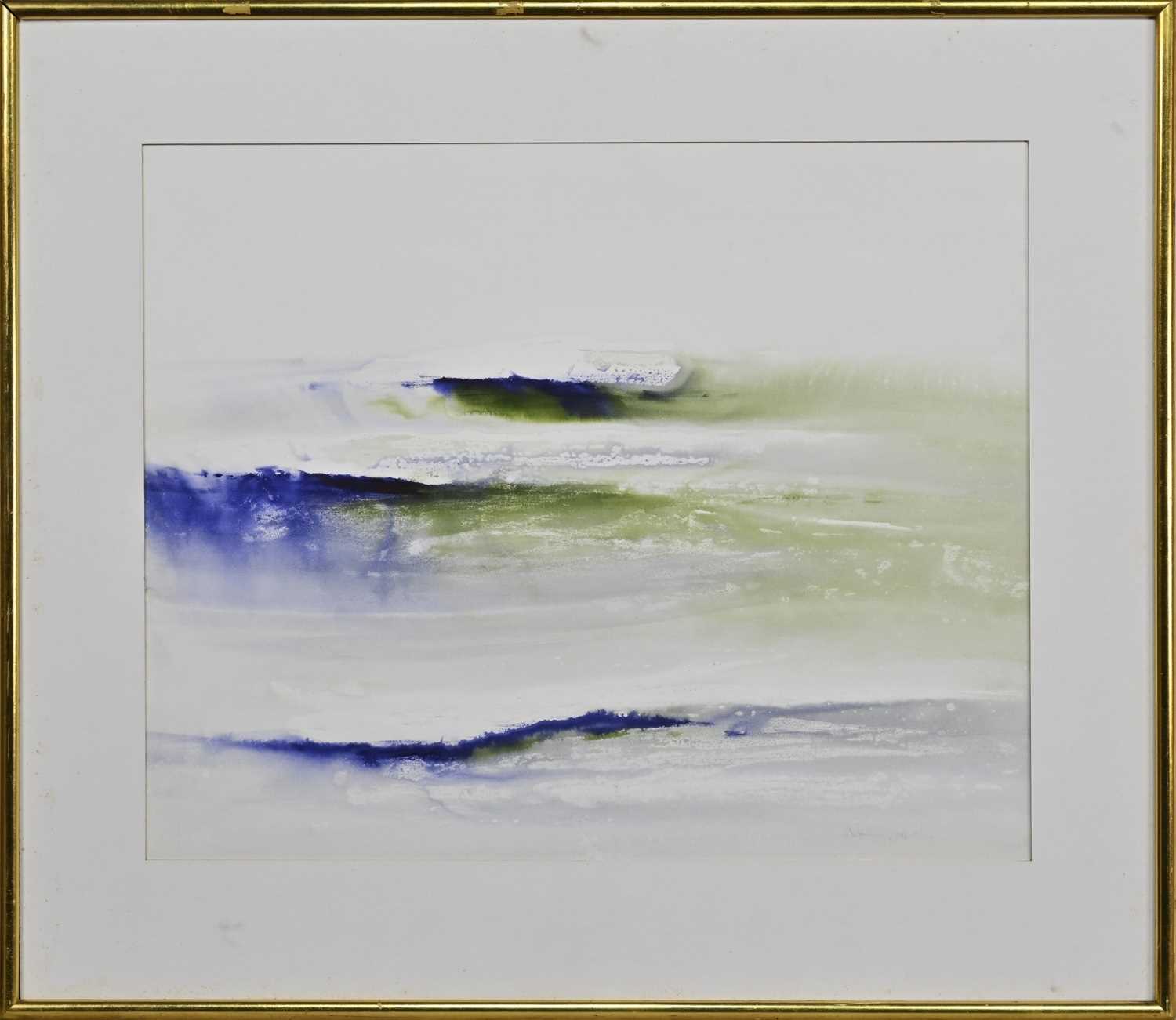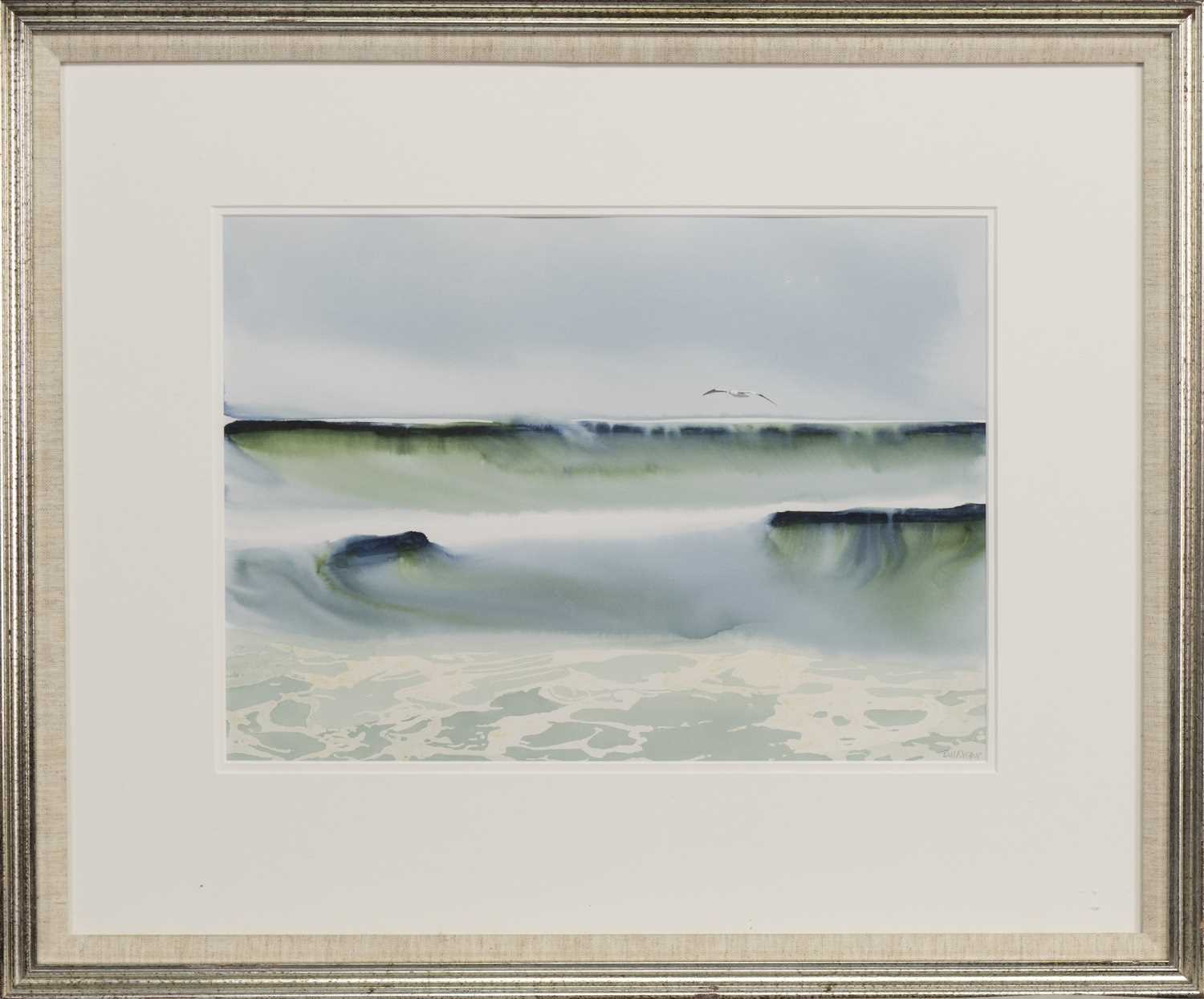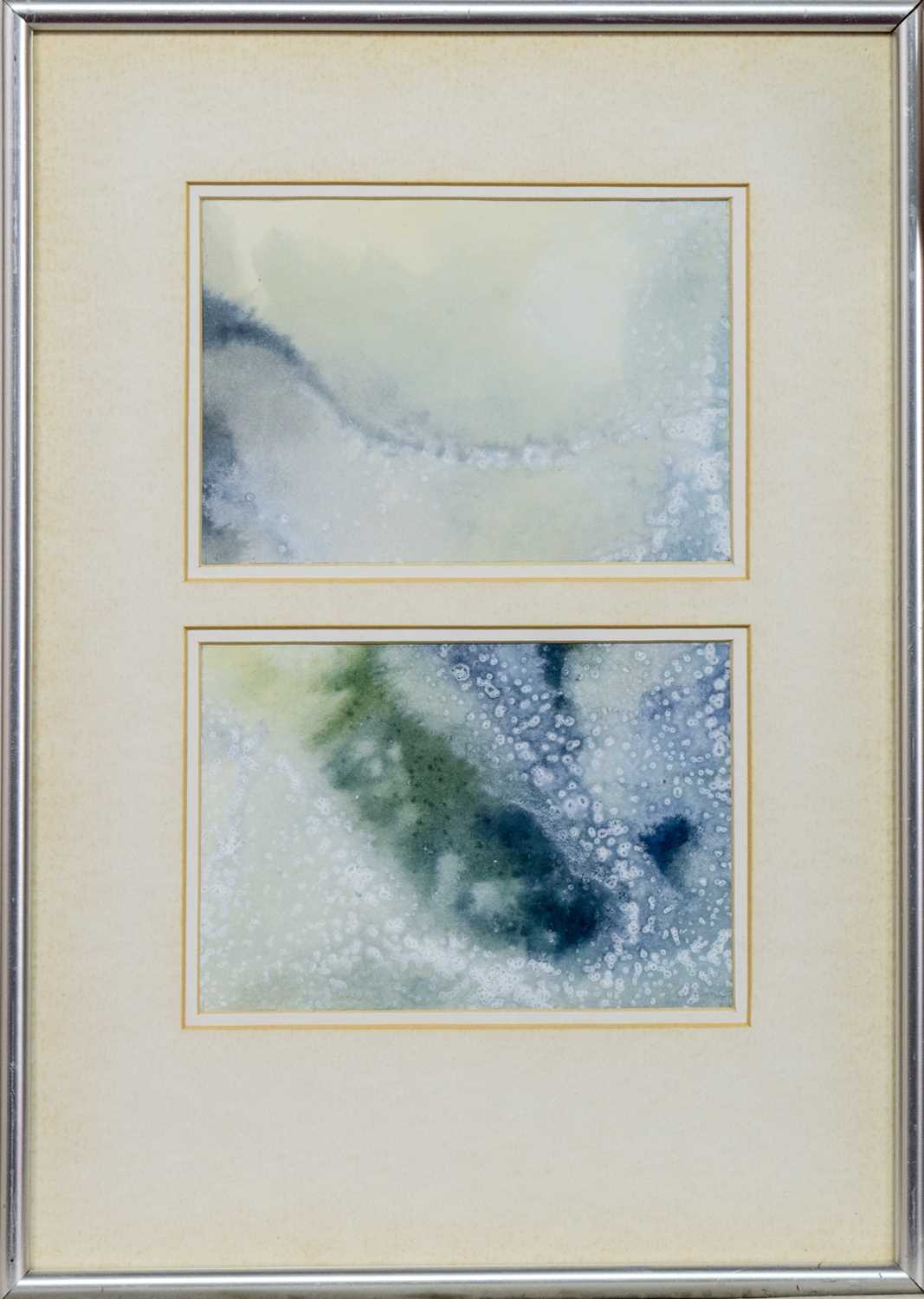mixed media on paper, signed, titled label verso mounted, framed and under glass image size 50cm x 62cm, overall size 71cm x 82cm Label verso: The Glasgow Art Club Note: Bill Wright's talent first became evident when he was a boy, drawing endlessly for amusement while bedbound with illness. He went on to study painting at Glasgow School of Art and became an award-winning watercolourist, constantly inspired by was seascape and ever-changing sky on the Kintyre peninsula where he had a second home. Glasgow-born Wright, the son of a shipyard plater, was brought up in Partick and started his schooling at the city’s Dowanhill Primary before being evacuated to Dunoon during the Second World War. After returning home he attended Hyndland Senior Secondary and despite being discouraged by his parents, who would have preferred him to have a “proper job”, in 1949 he began his studies at Glasgow School of Art. They were interrupted by national service – a duty he felt hindered the progression of his art career. He served at Catterick army garrison but was a pacifist who abhorred war and dismissed the opportunity to be promoted to Sergeant as an army career held no interest. His first teaching post was at East Park School in Glasgow’s Maryhill. He then moved in 1965 to St Patrick’s High School in Dumbarton where he spent two years before becoming art adviser for the area at the age of 36. Over the next two decades he fostered the idea of instilling a cultural interest in art among pupils. He formed working groups to reform teaching of first and second-year students, encouraged forward-looking principal teachers and recruited many young teachers. His ethos was that teachers were not just there to create artists but to give all children a good art experience. He also established a residential art course for school children, at the Pirniehall residential educational facility at Croftamie in Dunbartonshire, where youngsters from different backgrounds could investigate the idea of furthering an art career through experiencing a range of different mediums in an art camp environment. And he is said to have been instrumental in encouraging the implementation of Scotland’s Standard Grade art and design qualification. However, he suffered from the chronic arthritic condition ankylosing spondylitis which, by the age of 55, forced him to take early retirement from his post in the education department of Strathclyde Regional Council. Meanwhile, as he had strived to enthuse youngsters with his own passion for art, he had been elected, in 1977, to the Royal Scottish Society of Painters in Watercolour. A member of the Glasgow Arts Club for many years, he was also an elected member of the Glasgow Institute of Fine Arts and Paisley Art Institute, served as president of the Scottish Artists’ Benevolent Association for 14 years and was a Scottish Arts Council lecturer, touring the country discussing art. But perhaps his own greatest inspiration was the view from a cottage he stumbled upon half a century ago, seven miles from Campbeltown on the Mull of Kintyre. He rented the property at Bellochantuy and set up a studio there where he drew on the vistas stretching 180 degrees, encompassing sea, beach, rocks and sky. He was utterly smitten by the area and was ultimately bequeathed the cottage by the owner who had become a close family friend. Over the years he came to know the area intimately and was fascinated by the constantly changing moods of the sea and light of the sky which formed the majority of his output. One large body of work, "Towards Islay", focused on the view from the back of the cottage. He captured the patterns and waves of the sea, sometimes adding a bird, limpit, mermaid’s purse, rock lines or some seaweed. But at times his works were very abstract and symbolic, concentrating on themes of nature and transience. He was hung in all the major shows in Scotland and in galleries across the country from Aberdeenshire to Edinburgh, Glasgow and south
mixed media on paper, signed, titled label verso mounted, framed and under glass image size 50cm x 62cm, overall size 71cm x 82cm Label verso: The Glasgow Art Club Note: Bill Wright's talent first became evident when he was a boy, drawing endlessly for amusement while bedbound with illness. He went on to study painting at Glasgow School of Art and became an award-winning watercolourist, constantly inspired by was seascape and ever-changing sky on the Kintyre peninsula where he had a second home. Glasgow-born Wright, the son of a shipyard plater, was brought up in Partick and started his schooling at the city’s Dowanhill Primary before being evacuated to Dunoon during the Second World War. After returning home he attended Hyndland Senior Secondary and despite being discouraged by his parents, who would have preferred him to have a “proper job”, in 1949 he began his studies at Glasgow School of Art. They were interrupted by national service – a duty he felt hindered the progression of his art career. He served at Catterick army garrison but was a pacifist who abhorred war and dismissed the opportunity to be promoted to Sergeant as an army career held no interest. His first teaching post was at East Park School in Glasgow’s Maryhill. He then moved in 1965 to St Patrick’s High School in Dumbarton where he spent two years before becoming art adviser for the area at the age of 36. Over the next two decades he fostered the idea of instilling a cultural interest in art among pupils. He formed working groups to reform teaching of first and second-year students, encouraged forward-looking principal teachers and recruited many young teachers. His ethos was that teachers were not just there to create artists but to give all children a good art experience. He also established a residential art course for school children, at the Pirniehall residential educational facility at Croftamie in Dunbartonshire, where youngsters from different backgrounds could investigate the idea of furthering an art career through experiencing a range of different mediums in an art camp environment. And he is said to have been instrumental in encouraging the implementation of Scotland’s Standard Grade art and design qualification. However, he suffered from the chronic arthritic condition ankylosing spondylitis which, by the age of 55, forced him to take early retirement from his post in the education department of Strathclyde Regional Council. Meanwhile, as he had strived to enthuse youngsters with his own passion for art, he had been elected, in 1977, to the Royal Scottish Society of Painters in Watercolour. A member of the Glasgow Arts Club for many years, he was also an elected member of the Glasgow Institute of Fine Arts and Paisley Art Institute, served as president of the Scottish Artists’ Benevolent Association for 14 years and was a Scottish Arts Council lecturer, touring the country discussing art. But perhaps his own greatest inspiration was the view from a cottage he stumbled upon half a century ago, seven miles from Campbeltown on the Mull of Kintyre. He rented the property at Bellochantuy and set up a studio there where he drew on the vistas stretching 180 degrees, encompassing sea, beach, rocks and sky. He was utterly smitten by the area and was ultimately bequeathed the cottage by the owner who had become a close family friend. Over the years he came to know the area intimately and was fascinated by the constantly changing moods of the sea and light of the sky which formed the majority of his output. One large body of work, "Towards Islay", focused on the view from the back of the cottage. He captured the patterns and waves of the sea, sometimes adding a bird, limpit, mermaid’s purse, rock lines or some seaweed. But at times his works were very abstract and symbolic, concentrating on themes of nature and transience. He was hung in all the major shows in Scotland and in galleries across the country from Aberdeenshire to Edinburgh, Glasgow and south














Testen Sie LotSearch und seine Premium-Features 7 Tage - ohne Kosten!
Lassen Sie sich automatisch über neue Objekte in kommenden Auktionen benachrichtigen.
Suchauftrag anlegen